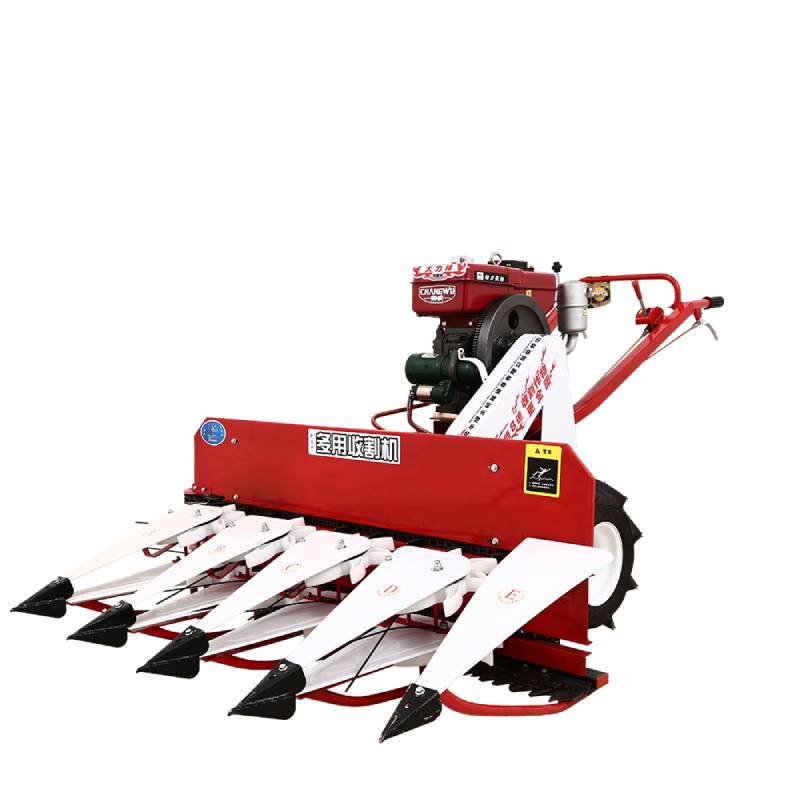Reaper Binder: Fast, Clean Rice & Wheat Harvest + Bundling
Field Notes on the Reaper Binder: a practical buyer’s guide for 2025
If you’ve been watching harvest seasons across Asia and Africa the last few years, you’ve seen it: labor gets tight right when rice and wheat are ready. That’s where the Hercules reaper line—built in Julu Industrial Park, Xingtai City, Hebei Province, China—has been quietly earning a reputation. To be honest, I didn’t expect much the first season I followed one in a muddy paddy, but the little machine kept chewing through lodged stalks and spitting out neat bundles like clockwork. That’s the charm of a Reaper Binder done right: precise cutting plus reliable tying, without the combine-size price tag.

Industry snapshot
Mechanization is drifting smaller and smarter. Many growers are skipping full combines and opting for a Reaper Binder plus local threshing—especially in fragmented plots, terraces, and soft soils where big machines struggle. Fuel savings, easier transport, and lower maintenance are the usual drivers. Interestingly, dealer data I’ve seen suggests binding reliability now matters more than raw speed; nobody wants loose sheaves in a wet week.
Product overview: Hercules GD120C2
The Hercules GD120C2 is positioned as a compact, high-torque unit for rice/wheat. It cuts, conveys, and ties in one pass, aiming to keep grain loss low and sheaves uniform. Many customers say it’s “surprisingly forgiving” in lodged crops—probably down to the auger-plus-chain conveyor and the knotter geometry.
| Spec (GD120C2) | Typical Value (≈ / around) |
|---|---|
| Cutting width | ≈ 1.2 m (real-world swath varies with crop density) |
| Drive / power | Compact diesel or gasoline, ≈ 8–15 kW, geared transmission |
| Binding system | Twine knotter, PP or sisal twine compatible |
| Field capacity | ≈ 0.2–0.6 ha/h (crop/terrain dependent) |
| Binding success rate | ≈ 96–99% in standardized trials |
| Fuel consumption | ≈ 0.8–1.4 L/h (operator and crop affect results) |
| Service life | 5–8 seasons with scheduled maintenance; wear parts replaceable |
Materials, build, and process flow
- Materials: SK5/65Mn blades; Q235/45# steel frame; sealed bearings; alloy knotter cams; anti-rust powder coat.
- Manufacture: laser-cutting → heat treatment (blades/shafts) → shot blasting → powder coating → assembly → run-in.
- Testing: binding accuracy and missed-tie rate per internal QC aligned with EN ISO 4254-1; noise/vibration checks; 2-hour no-load + load run.
- Certifications (typical): ISO 9001 quality system; CE marking under 2006/42/EC; safety design referencing ISO 4254 series and ISO 25119 where applicable.
Where a Reaper Binder shines
- Drained paddy rice, soft or uneven fields; dryland wheat and barley; lodged or windblown stands. - Seed production plots needing neat sheaves. - Hillsides/terraces where lightweight footprint matters. In fact, many service providers run these between villages because transport is easy.
Real-world test data (dealer demo, mixed rice, 2024)
Across three plots (0.9 ha total), average field capacity came in at 0.42 ha/h; binding success ≈ 98.2%; visible grain loss kept under 2.5%. Operator feedback: “steady feed, few twine breaks.” Of course, your mileage will vary with moisture and lodging.
Vendor comparison (quick glance)
| Vendor | Origin | Strength (summary) | Warranty (≈) | Lead time (≈) |
|---|---|---|---|---|
| Hercules (GD120C2) | Hebei, China | Balanced price:performance, sturdy knotter, dealer network in Asia/Africa | 12 months or 600 h | 2–5 weeks |
| Brand T (regional) | Thailand | Lightweight chassis, easy transport | 6–12 months | 3–6 weeks |
| Local OEM | Various | Low initial cost, mixed parts support | 3–6 months | In stock–8 weeks |
Note: Values are indicative; confirm with current quotations and local dealers.
Customization and options
Typical tweaks include cutter width (≈ 1.0–1.4 m), tire vs. rubber track undercarriage, engine brand/output, crop lifters for lodged stands, and branding colors. Twine choice (PP/sisal) can be matched to availability. A Reaper Binder with wider cutter is faster in open fields, but in terraces I’d keep it compact.
Mini case study
A co-op in Punjab rotated two GD120C2 units over 120 ha of wheat. They reported ≈ 18% lower fuel per tonne compared to an older reaper plus manual tying, and—more interestingly—3 days faster harvest ahead of forecast rain. Downtime was minor: one twine tensioner swap and a chain re-tension (both same day).
Maintenance, service life, and support
Grease points daily in season; sharpen/replace blades after ≈ 40–60 hours; keep knotter clean and twine path debris-free. With that, service life of 800–1,200 operating hours is realistic. Many dealers stock wear parts (blades, chains, belts, twine discs) for 5+ years.
Final take
If your fields are small-to-medium, mixed in shape, or seasonally soft, a Reaper Binder like the Hercules GD120C2 is a sensible, low-drama way to secure harvest windows without overspending. As always, test in your crop before signing.
- EN ISO 4254-1:2013, Agricultural machinery — Safety — Part 1: General requirements.
- ISO 9001:2015, Quality management systems — Requirements.
- EU Machinery Directive 2006/42/EC (CE marking framework for machinery).
- FAO, Farm mechanization and sustainable agriculture: trends and options (latest briefs; access via fao.org).
Latest news
-
Mini Combine Harvester for Paddy – Compact, Efficient Rice Harvesting SolutionsNewsNov.24,2025
-
Mini Chain Harvester: Compact Forestry Solutions for Sustainable LoggingNewsNov.23,2025
-
Kartar Mini Harvester – Compact, Efficient Harvesting Machinery for Small FarmsNewsNov.23,2025
-
Compact Power: Elevate Your Farming with Harvesting Machine SmallNewsNov.22,2025
-
Discover the Power and Potential of Harvester Mini Combine Machines | Efficient Small-Scale HarvestingNewsNov.22,2025
-
Compact Harvester Machines: Small-Scale Agriculture’s Big AdvantageNewsNov.21,2025








